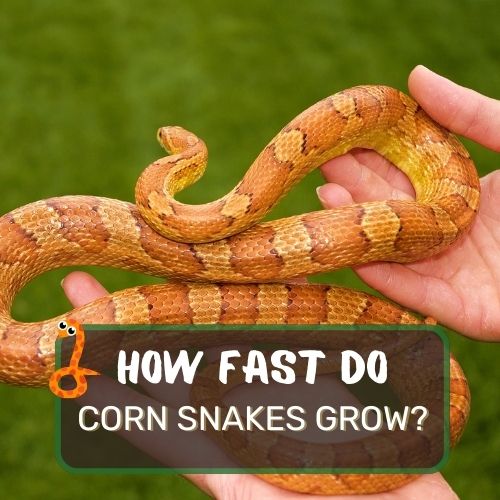
Have you ever wondered, “How fast do corn snakes grow?”
Well, you’re in for a treat! This article delves deep into the captivating growth journey of corn snakes, one of the most popular pet reptiles.
From their early days as tiny hatchlings to their majestic adult phase, we’ll explore every twist and turn.
We’ve examined key factors like genetics, habitat conditions, diet, and temperature to give you a comprehensive understanding.
By the end of this read, you’ll not only know the growth rate of these slithering beauties but also the intricacies that influence their size.
Dive in and discover the mesmerizing world of corn snake growth!
Table of Contents
- 1 How Fast Do Corn Snakes Grow?
- 2 The Basics of Corn Snake Growth
- 3 Hatchlings: The Beginning of the Journey
- 4 Corn Snake Growth Chart by Age
- 5 Tips on How to Measure Your Corn Snake
- 6 Factors That Impact Corn Snake Size
- 6.1 Genetics: The Role Genetics Play in Determining Size
- 6.2 Habitat: The Importance of the Right Tank Size for Different Life Stages
- 6.3 The Dangers of Stunting Growth with a Small Enclosure
- 6.4 Diet: Proper Nutrition for Optimal Growth
- 6.5 The Role of Prey Movement in Feeding
- 6.6 Temperature: The Right Temperature Range for Corn Snakes
- 6.7 Effects of Too Warm or Too Cool Habitats
- 7 Preparing for a Full-Grown Corn Snake
- 8 Conclusion
- 9 FAQ
How Fast Do Corn Snakes Grow?
Corn snakes, popular pets among reptile enthusiasts, exhibit a steady growth pattern. When they hatch, they’re typically between 8 to 12 inches long. As they mature, they don’t experience rapid growth spurts like some animals. Instead, they grow gradually. Most corn snakes reach a length of 3 to 5 feet by the time they’re 2 to 3 years old. Factors influencing their growth include genetics, diet, habitat conditions, and temperature. It’s essential to provide them with proper care and nutrition to ensure they grow healthily and reach their full potential size. Males often grow slightly larger than females.
The Basics of Corn Snake Growth

Ah, the corn snake! A favorite among reptile lovers and a common sight in many homes. But one question that often pops up is: “How fast do these slithering beauties grow?”
Let’s dive into the fascinating world of corn snake growth.
How big corn snakes can get
Corn snakes are not the titans of the snake world, but they’re no slouches either. On average, a fully grown corn snake will measure between 3 to 5 feet in length.
Now, while that might not sound like a lot, imagine a snake as long as your couch! Some exceptional corn snakes, especially those with a hearty appetite and good genes, can even stretch up to 6 feet.
That’s taller than many humans!
Differences in size between males and females
In the animal kingdom, size differences between males and females are quite common, and corn snakes are no exception.
Typically, male corn snakes tend to be slightly longer and bulkier than their female counterparts. However, this isn’t a hard and fast rule.
There are always exceptions, and you might come across a particularly large female or a smaller male. But, on the whole, if you’re betting on size, the males usually take the crown.
Hatchlings: The Beginning of the Journey
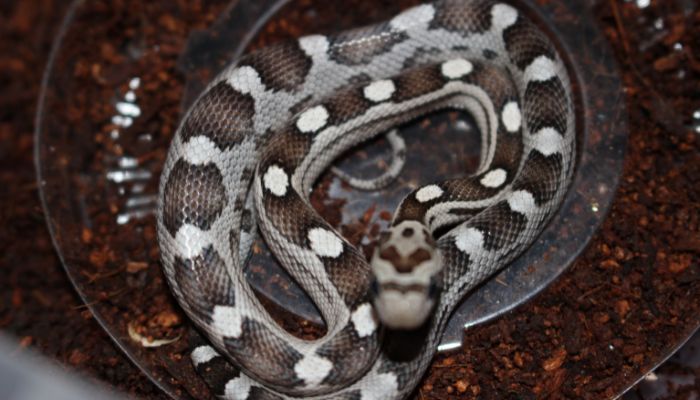
Every journey has a beginning, and for corn snakes, it starts as a tiny hatchling.
Size of hatchlings when they emerge from their eggs
Imagine a small ruler, about 8 to 12 inches long. That’s the size of a corn snake when it first emerges from its egg.
Tiny, right?
These little ones are delicate, with bright eyes and an insatiable curiosity about the world.
Typical growth pattern from hatchling to adulthood
Corn snakes don’t just wake up one day and find themselves fully grown. Their growth is a gradual process. In their first six months, they might grow a few inches, reaching about 15 inches in length.
As they approach their first birthday, they could be anywhere from 15 to 30 inches long. By the time they’re two, they’re already young adults, stretching between 30 to 40 inches.
And, as they near their third birthday, they’re almost at their full size, ranging from 40 to 60 inches.
Throughout this journey, it’s essential to provide them with the right care, diet, and environment.
A well-fed corn snake in a suitable habitat will grow steadily and healthily, reaching its full potential in size and living a long, happy life.
Understanding the growth pattern of corn snakes is not just essential for potential snake owners but also fascinating for anyone intrigued by these wonderful creatures.
Their steady growth, combined with their gentle nature, makes them a perfect pet for both novice and experienced reptile enthusiasts.
Corn Snake Growth Chart by Age
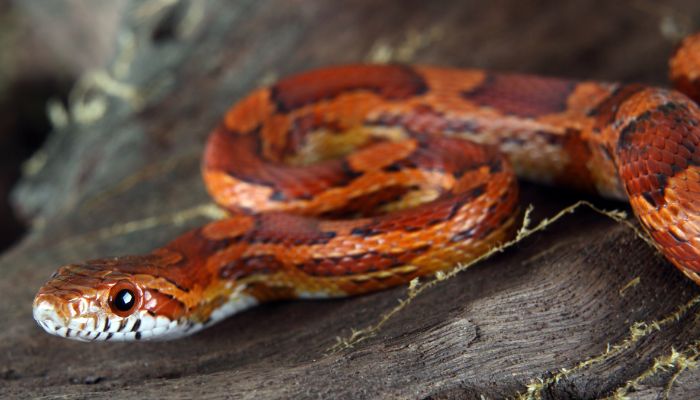
Like any living creature, they grow and change as they age. For those considering bringing one of these slithering companions into their home, or for the curious minds out there, understanding their growth pattern is crucial.
Let’s break down the growth of corn snakes by age, shall we?
Hatchling (0-6 months): 8 to 15 inches
Ah, the early days! Hatchlings are a sight to behold. Emerging from their eggs, these tiny creatures are just 8 to 12 inches long. It’s a delicate phase, where they’re exploring their new world and beginning to understand their surroundings.
By the end of their sixth month, with proper care and feeding, they can grow up to 15 inches. It’s fascinating to watch them at this stage, their movements filled with youthful energy and curiosity.
Juvenile (6-12 months): 15 to 30 inches
As the corn snake enters its juvenile phase, things start to get a bit more exciting. Their growth rate picks up, and they can double in size, reaching up to 30 inches by their first birthday. It’s during this phase that their personality starts to shine through.
They become more active, exploring every nook and cranny of their habitat. Their diet also changes, requiring larger prey to support their rapid growth. It’s a time of significant transformation, and with each passing day, they inch closer to their adult size.
Young Adult (1-2 years): 30 to 40 inches
The young adult phase is a transitional period for corn snakes. They’ve left their juvenile days behind and are now on the cusp of adulthood.
Their growth rate slows down a bit, but they still add a substantial 10 inches to their length during this year. At this stage, they’re more settled in their environment, understanding the rhythms of their world.
Their diet stabilizes, and they develop a more regular feeding pattern. It’s also during this phase that many corn snake owners notice their pets becoming more comfortable with handling, making it a great time to bond with them.
Adult (2-3 years): 40 to 60 inches
By the time corn snakes reach their second birthday, they’re entering their adult phase. They’ve achieved most of their growth, but they can still add another 20 inches to their length, reaching up to 60 inches by their third year.
As adults, corn snakes are a sight to behold. Their colors are vibrant, and their movements are graceful. They’ve established their routines, and their personalities are well-defined. It’s also the phase where they reach sexual maturity, so if breeding is on the cards, now’s the time!
| Life Stage | Age | Size |
| Hatchling | 0-6 months | 8 to 15 inches |
| Juvenile | 6-12 months | 15 to 30 inches |
| Young Adult | 1-2 years | 30 to 40 inches |
| Adult | 2-3 years | 40 to 60 inches |
Tips on How to Measure Your Corn Snake
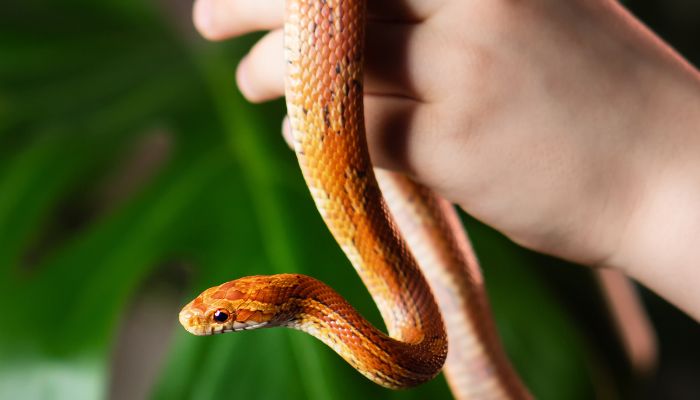
Measuring your corn snake might seem like a daunting task, especially if you’ve never done it before. But, with a little patience and the right approach, it can be a breeze.
Here are some handy tips to ensure you get an accurate measurement without stressing out your slithery friend:
- Wait for the Right Time: It’s best to measure your corn snake after it has digested its meal. Measuring right after feeding can be uncomfortable for the snake and might even lead to regurgitation. A good rule of thumb is to wait at least 48 hours after feeding.
- Use a Soft Measuring Tape: A soft, flexible measuring tape (like the ones used for sewing) is ideal. It can easily follow the snake’s curves and give a more accurate measurement than a rigid ruler.
- Gentle Handling: Ensure your hands are clean and approach your snake calmly. Gently pick it up, allowing it to move freely between your hands. A relaxed snake is easier to measure.
- The String Method: If your snake is particularly squirmy, use a piece of non-stretchy string. Lay the string along the snake’s body from the tip of its nose to the end of its tail. Mark the string where it reaches the tail end. Then, measure the string against a ruler.
- Safety First: Always be cautious. If your snake seems agitated or stressed, it’s best to try again later. Remember, snakes can sense your emotions, so staying calm and collected will help keep them relaxed.
- Document the Growth: Keep a growth chart or journal. Regular measurements, say every month, can help you track your snake’s growth and ensure it’s growing healthily.
Measuring your corn snake doesn’t have to be a challenge. With the right tools and a gentle touch, you can easily track its growth and ensure it’s thriving.
Remember, it’s not just about numbers; it’s about understanding and caring for your pet.
Factors That Impact Corn Snake Size
Corn snakes are fascinating creatures, and their growth is influenced by a myriad of factors. While it’s intriguing to watch them grow, understanding what impacts their size can help ensure they live a healthy, fulfilling life.
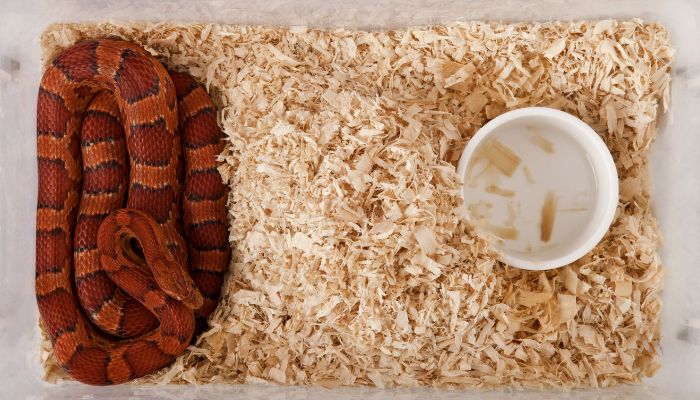
Let’s delve into the primary factors that play a role in determining the size of a corn snake.
Genetics: The Role Genetics Play in Determining Size
Just as humans inherit traits from their parents, so do corn snakes. Genetics play a pivotal role in determining the potential size of a corn snake.
If a snake comes from a lineage of larger snakes, it’s more likely to grow bigger than one from a lineage of smaller snakes.
However, while genetics set the potential, environmental factors determine if the snake reaches that potential. It’s a dance between nature and nurture.
Habitat: The Importance of the Right Tank Size for Different Life Stages
A corn snake’s habitat is its world. The size and quality of its enclosure can significantly impact its growth.
- For Hatchlings: A smaller enclosure, like a 10-gallon tank, might suffice. It provides them with a sense of security.
- Juveniles: As they grow, they require more space to move and explore. A 20-gallon tank is often recommended.
- Adults: A fully-grown corn snake needs space, with a 40-gallon tank being the minimum recommendation. Some owners even opt for larger enclosures to give their pets more room to roam.
The Dangers of Stunting Growth with a Small Enclosure
It’s a myth that snakes will only grow to the size of their enclosure. In reality, keeping a snake in a too-small tank can lead to severe health issues. A cramped space can lead to stress, reduced appetite, and even physical deformities.
It’s not just about length; snakes need vertical space to climb and areas to hide. A proper habitat is crucial for their mental and physical well-being.
Diet: Proper Nutrition for Optimal Growth
Food is fuel, and for corn snakes, the right diet is paramount for growth.
- Hatchlings: They require frequent feeding, typically once every 5-7 days. At this stage, they usually eat smaller prey like pinky mice.
- Juveniles: As they grow, their meals get bigger. Feeding them every 7-10 days with appropriately sized prey is essential.
- Adults: Adult corn snakes eat larger prey, like adult mice or even small rats, and can be fed every 10-14 days.
The Role of Prey Movement in Feeding
Corn snakes, like many reptiles, have a strong prey drive. The movement of their food can stimulate their hunting instincts.
For those feeding frozen-thawed prey, simulating movement by dangling the prey with tongs can encourage the snake to eat. However, always ensure the prey is properly thawed to prevent digestive issues.
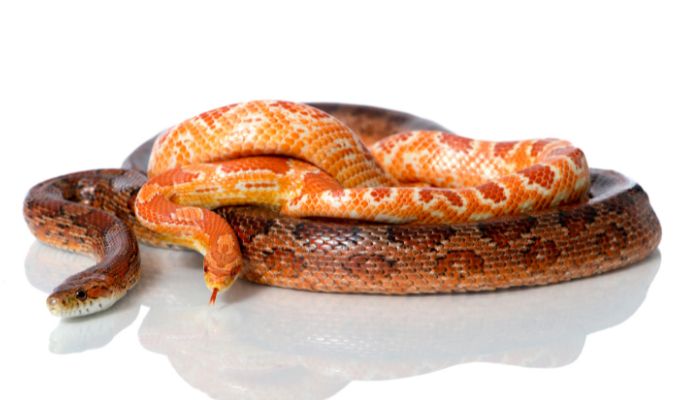
Temperature: The Right Temperature Range for Corn Snakes
Corn snakes are ectothermic, meaning they rely on external sources to regulate their body temperature. Maintaining the right temperature in their habitat is crucial for digestion and overall health.
- Ideal Range: Corn snakes thrive in a temperature gradient, with a cooler side around 75°F and a warmer basking area between 85°F to 88°F.
Effects of Too Warm or Too Cool Habitats
If a corn snake’s habitat is too warm, it can lead to dehydration and increased stress. On the other hand, if it’s too cool, digestion becomes a challenge, leading to regurgitation or other health issues.
Regularly monitoring and adjusting the temperature, using tools like thermostats and heat lamps, ensures a comfortable environment for growth
Preparing for a Full-Grown Corn Snake
As your corn snake grows, so do its needs. Preparing for a full-grown corn snake is not just about accommodating its size but also ensuring it leads a healthy, enriched life.
Ensuring You Have the Right Environment and Tank Size
A full-grown corn snake requires space. While they might start in a 10 or 20-gallon tank as hatchlings or juveniles, adults need at least a 40-gallon tank.
This space allows them to move, explore, and exercise. Additionally, the tank should have a temperature gradient, hiding spots, climbing branches, and a water dish.
Remember, it’s not just about length; vertical space is equally important for them to climb and explore.
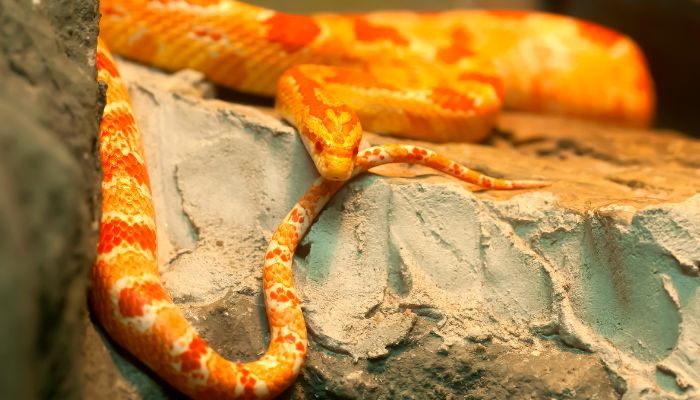
The Importance of Proper Care to Prevent Growth Defects
Proper care goes beyond just feeding and housing. It’s about understanding the snake’s needs at different life stages. Regular vet check-ups, proper substrate choice to prevent impaction, and monitoring for any signs of illness are crucial.
Growth defects can arise from inadequate nutrition, incorrect temperatures, or even genetic factors. Being proactive in their care can prevent many of these issues, ensuring your corn snake grows healthily.
Conclusion
You’ve embarked on a fascinating journey exploring the growth patterns of corn snakes.
From understanding the genetic factors that set the stage for their potential size to the crucial role of habitat, diet, and temperature, you’ve gained a comprehensive insight into what influences their growth.
Remember, while corn snakes have an average growth rate, each snake is unique, and individual care can make a significant difference.
As you’ve learned, their size isn’t just about genetics; it’s a dance between nature and the nurturing environment you provide.
Whether you’re a seasoned snake enthusiast or someone considering adopting one of these magnificent creatures, the knowledge you’ve gained here is invaluable.
Keep this information close, apply it with care, and you’ll be well on your way to ensuring your corn snake thrives. Stay curious, continue learning, and always strive to provide the best for your slithery companion.
Your dedication and passion will undoubtedly lead to a long, healthy, and fulfilling life for your corn snake. Keep up the great work!
FAQ
Let’s address some of the most commonly asked questions about corn snakes and their growth.
How big is a 1-year-old corn snake?
By the time a corn snake reaches its first birthday, it has undergone significant growth from its hatchling days. Typically, a 1-year-old corn snake, often referred to as a juvenile, will measure between 15 to 30 inches in length. However, individual growth can vary based on factors like genetics, diet, and overall care.
How old is a corn snake when it first sheds?
The shedding process, known as ecdysis, is a natural part of a snake’s life, allowing it to grow and remove worn-out skin. Corn snakes experience their first shed shortly after hatching. This inaugural shed usually occurs within the first 7-14 days of their life. It’s a sign of healthy growth and development.
How fast do corn snakes grow in captivity?
Corn snakes in captivity, when provided with optimal care, exhibit a steady growth rate. From their initial size of about 8 inches as hatchlings, they can grow to reach lengths of 5 feet or even more within a few years. Proper nutrition, habitat conditions, and regular health check-ups play a crucial role in their growth trajectory.
Why is my corn snake so small?
If you’ve noticed that your corn snake is smaller than its peers, several factors could be at play. Genetics can dictate the potential size, but other factors like inadequate nutrition, suboptimal habitat temperatures, or underlying health issues can also impact growth. Stress, often resulting from frequent habitat changes or improper handling, can also hinder growth. If you’re concerned about your snake’s size, it’s always a good idea to consult with a reptile veterinarian.
How long do corn snakes live?
Corn snakes are a commitment, but they’re worth every moment. In captivity, with the right care, they can lead long, healthy lives. On average, their lifespan ranges between 15 to 20 years. Some particularly well-cared-for corn snakes have even been known to reach their mid-20s!

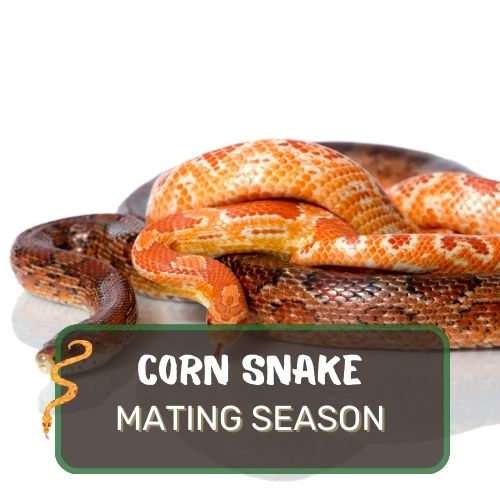
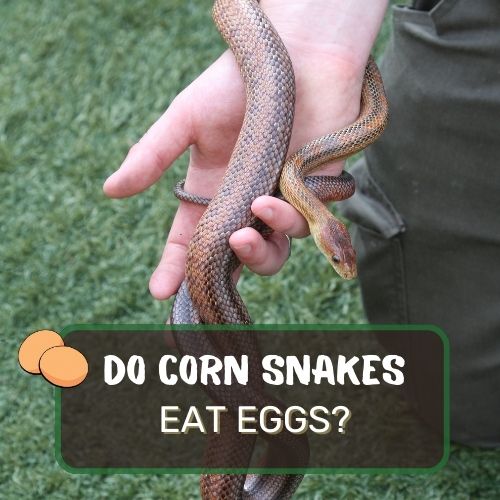
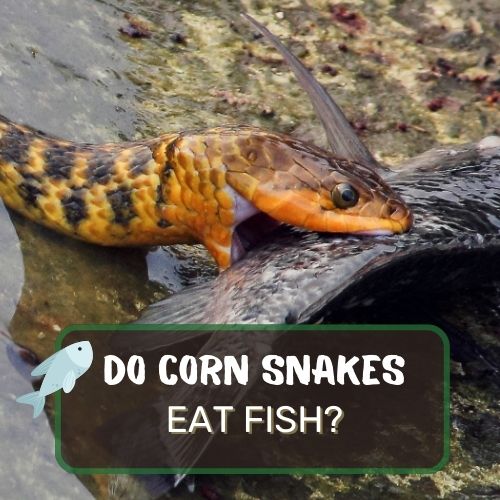
0 Comments